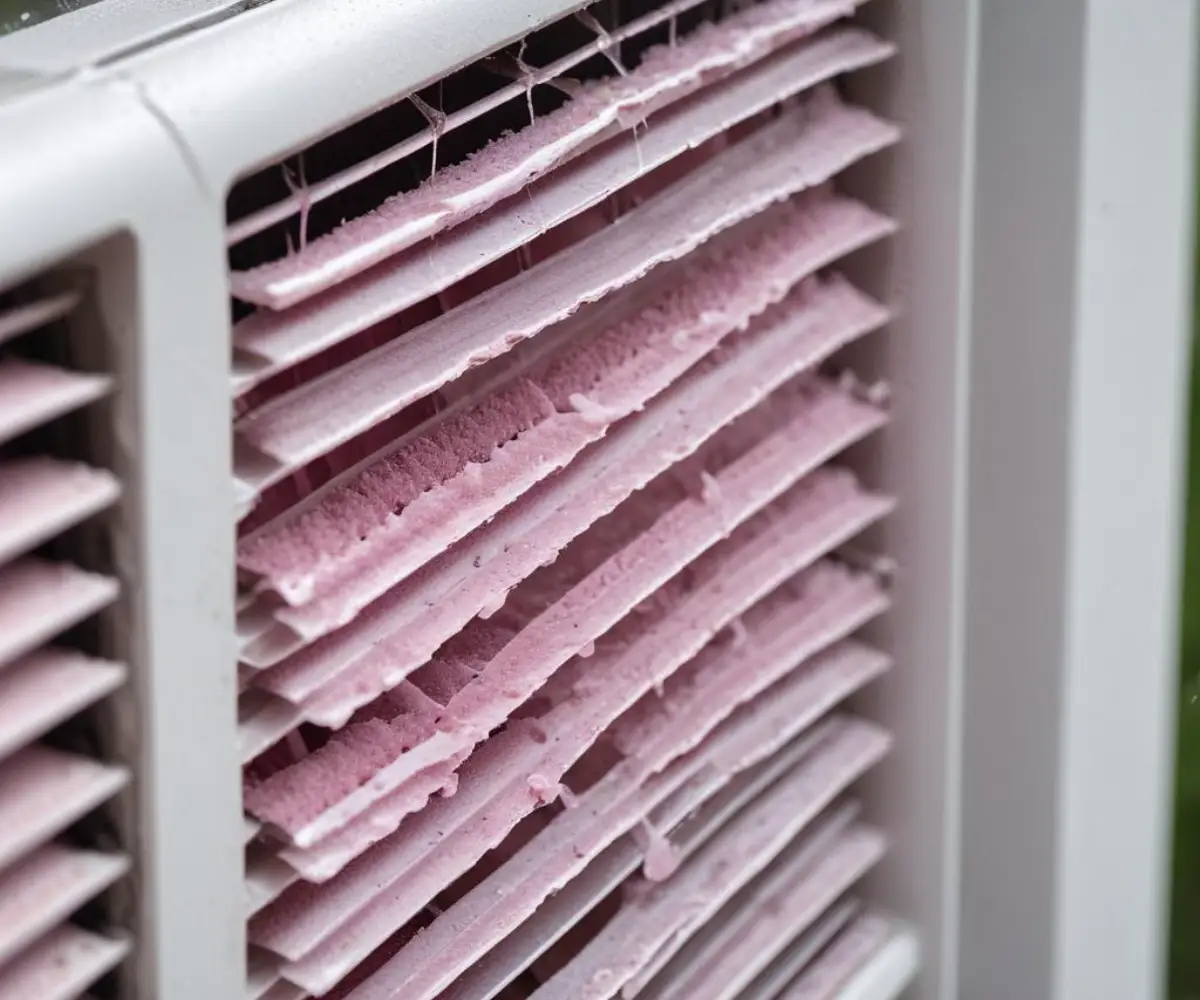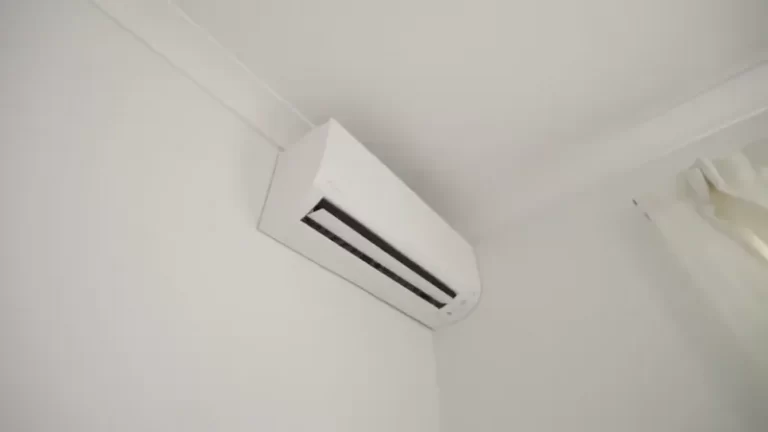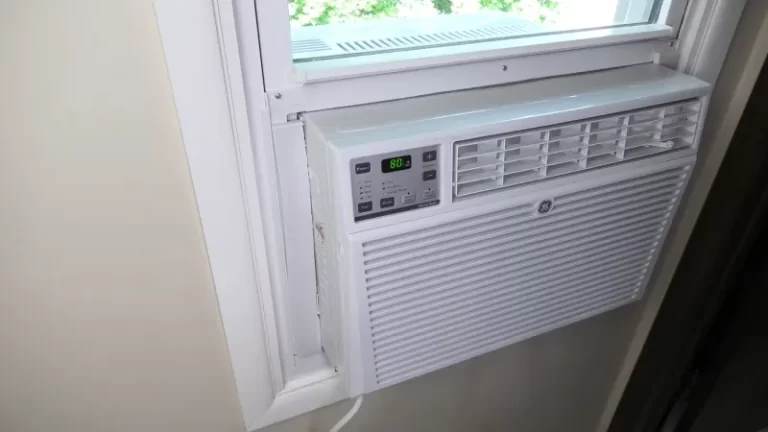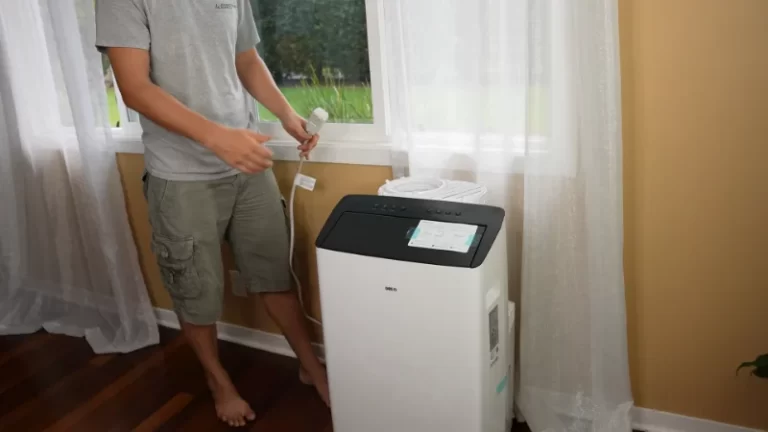Pink Slime In Your AC? Here’s the Truth and How to Fix It
You turn on your window air conditioner seeking cool relief, but instead, you notice a strange, slimy pink residue clinging to the vents. This unwelcome sight is not just unsightly; it raises serious questions about air quality and health. Ignoring this issue allows it to worsen, potentially affecting both your AC’s performance and your well-being.
The pink substance is a biofilm created by an airborne bacterium called Serratia marcescens. It thrives in the damp, dark environment inside your AC unit, feeding on dust and other microscopic organic matter. Understanding what this slime is and how to safely remove it is the first step toward breathing cleaner, cooler air.
You'll Learn About
What Exactly is This Pink Slime in Your Window Air Conditioner?
Discovering a pink or reddish slime inside your air conditioner can be alarming. It’s a common issue that many homeowners face, and knowing its origin is key to eliminating it effectively. This substance is more than just accumulated dust; it’s a living organism.
Identifying the Pink Residue: Not Just Dirt
At first glance, you might mistake the pink residue for rust or dirt, but its slimy texture is a clear indicator of biological growth. This biofilm can range in color from light pink to a deep reddish-orange. You’ll typically find it on surfaces that are consistently damp, such as the evaporator coils, drain pan, and air vents.
This slime is evidence of a persistent moisture problem within your unit. The bacteria responsible are airborne and can establish a colony wherever conditions are favorable. Therefore, simply wiping it away without addressing the underlying cause will only lead to its quick return.
The Culprit: Serratia Marcescens Bacteria Explained
The pink slime is a biofilm produced by the bacterium Serratia marcescens. This bacterium is found naturally in soil, water, and even on animals, making it a common environmental microbe. It produces a characteristic reddish-orange pigment called prodigiosin, especially at room temperature, which gives the slime its distinctive color.
While this bacterium is widespread, its presence in your AC unit means it’s being aerosolized and distributed throughout your living space every time you run the air. For most healthy individuals, this isn’t a major threat, but it’s not something to be ignored.
Why Your AC is the Perfect Breeding Ground
A window air conditioner creates an ideal habitat for Serratia marcescens to flourish. The cooling process naturally removes moisture from the air, which collects on the evaporator coils and in the condensate drain pan. This constant moisture, combined with the dark interior of the unit and a food source (dust and organic debris), creates a perfect storm for bacterial growth.
When the unit isn’t draining properly or if humidity levels are consistently high, the problem can escalate quickly. The bacteria multiply, forming the thick, slimy biofilm you see. This underscores the importance of not just cleaning the slime but maintaining your AC to prevent its recurrence.
Is the Pink Slime in Your AC Dangerous to Your Health?
While the sight of pink slime is unpleasant, the primary concern for most people is its potential impact on health. Understanding the risks associated with airborne bacteria is crucial for deciding how urgently you need to address the problem.
Potential Health Risks of Airborne Bacteria
For the majority of healthy people, exposure to Serratia marcescens from an AC unit is unlikely to cause serious illness. However, it is an opportunistic pathogen, meaning it can cause infections in individuals with compromised immune systems, the elderly, infants, or those with pre-existing respiratory conditions like asthma.
Inhaling the aerosolized bacteria can potentially lead to respiratory tract issues, urinary tract infections, or eye infections, particularly if the bacteria enter the body through cuts or the eyes. While rare in a household setting, hospital-acquired infections from this bacterium can be serious, highlighting its potential for harm in vulnerable populations.
Who is Most at Risk?
Individuals with weakened immune systems are the most susceptible to infections from Serratia marcescens. This includes people undergoing chemotherapy, those with autoimmune disorders, or individuals with chronic illnesses. Small children and elderly family members are also at a higher risk.
If anyone in your household falls into these categories, eliminating the pink slime should be a high priority. Maintaining excellent indoor air quality is essential for protecting their health and well-being.
When to Be Concerned About Symptoms
If you or a family member experience persistent respiratory symptoms such as coughing, wheezing, or shortness of breath that seem to worsen when the air conditioner is running, it could be related to the bacterial growth. Other potential symptoms include eye irritation or skin rashes.
It’s important to consult a healthcare professional if you have health concerns. Addressing the source of the contamination by thoroughly cleaning your air conditioner is a critical step in mitigating any potential health effects.
Your Step-by-Step Guide to Eliminating Pink Slime from Your AC
Removing the pink slime requires more than a quick wipe-down. A thorough cleaning is necessary to eradicate the existing bacteria and remove the biofilm. Following a systematic approach will ensure you do the job safely and effectively.
Safety First: Essential Precautions Before You Begin
Before you start cleaning, your safety is paramount. Always unplug the air conditioner from the power source to eliminate any risk of electric shock. It’s also wise to wear protective gear, including waterproof gloves, safety goggles, and a face mask (like an N95 respirator) to avoid direct contact with the bacteria and cleaning solutions.
Work in a well-ventilated area. If possible, remove the unit from the window and take it outside for cleaning. This prevents spores and cleaning fumes from spreading inside your home.
Gathering Your Cleaning Arsenal
To tackle the pink slime, you’ll need a few key supplies. Prepare a cleaning solution by mixing equal parts water and white vinegar in a spray bottle. You can also add a few drops of mild dish soap for extra cleaning power.
You will also need a soft-bristled brush or an old toothbrush, several microfiber cloths, a bucket of clean water, and a wet/dry vacuum if you have one. Avoid using harsh chemicals like bleach, as they can damage the delicate fins of the evaporator coils and may produce toxic fumes.
The Deep Cleaning Process
Follow these steps for a comprehensive cleaning. Step 1: Disconnect Power and Disassemble. After unplugging the unit, remove the front grille and the air filter. Depending on your model, you may need a screwdriver to remove the outer metal casing to access the interior components.
Step 2: Remove and Clean the Filter. The filter is your first line of defense. If it’s a reusable filter, wash it thoroughly with warm, soapy water and allow it to dry completely before reinstalling. If it’s a disposable filter, replace it with a new one.
Step 3: Vacuum Loose Debris. Use a vacuum with a brush attachment to remove any loose dust, dirt, and debris from the interior of the unit. Pay close attention to the evaporator coils (the metal fins at the front) and the blower wheel.
Step 4: Apply the Cleaning Solution. Liberally spray your vinegar and water solution onto all surfaces affected by the pink slime. This includes the coils, drain pan, vents, and any other visible areas of growth. Let the solution sit for 10-15 minutes to break down the biofilm.

Step 5: Scrub Away the Slime. Use your soft-bristled brush to gently scrub the areas you sprayed. The slime should start to lift away easily. Be careful not to bend the delicate aluminum fins on the coils.
Step 6: Rinsing and Drying. Wipe all surfaces with a clean, damp cloth to remove the cleaning solution and loosened grime. Rinse the cloth frequently in your bucket of clean water. Finally, allow the entire unit to air dry completely—this may take several hours—before reassembling it and plugging it back in.
Preventing the Pink Menace: How to Keep Your AC Slime-Free
Once your air conditioner is clean, the next goal is to prevent the pink slime from returning. Proactive maintenance is the key to keeping the bacterial growth at bay and ensuring your unit runs efficiently and safely.
The Importance of Regular Maintenance
Consistency is crucial. A regular cleaning schedule prevents the buildup of dust and moisture that bacteria feed on. Aim to clean your AC’s filter at least once a month during heavy use and perform a deep clean, like the one described above, at the beginning and end of each cooling season.
This routine maintenance not only prevents pink slime but also improves your AC’s efficiency, lowers energy bills, and extends the lifespan of the unit. A well-maintained unit provides better cooling and cleaner air.
Controlling Humidity: A Key Prevention Tactic
Serratia marcescens thrives in high humidity. Keeping the relative humidity in your home between 40% and 60% can significantly inhibit its growth. Many modern air conditioners have a “Dry” or “Dehumidify” mode that can help manage indoor moisture levels.
For more persistent humidity issues, consider using a standalone dehumidifier in conjunction with your AC. Improving ventilation by using an extra wide window fan on cooler, less humid days can also help circulate fresh air and reduce moisture buildup.
An often-overlooked factor in humidity control is the proper sizing of your AC unit. A unit that is too powerful for the space will cool the room quickly and then shut off, a process known as “short-cycling.” This rapid cycling doesn’t allow the unit enough runtime to effectively dehumidify the air, leaving behind a damp environment perfect for bacterial growth.
The Role of Proper Drainage
Proper drainage is critical for preventing the stagnant water where pink slime originates. Ensure your window AC unit is installed with a slight downward tilt to the outside (check your manual for the recommended angle). This allows condensation to flow out of the drain pan instead of pooling inside the unit.
Periodically check the drain port on the back of the unit to make sure it is clear of blockages. If you notice water dripping from the front of the unit or pooling inside, it’s a sign of a drainage problem that needs immediate attention.
| Prevention Method | Frequency | Key Benefit |
|---|---|---|
| Clean/Replace Air Filter | Monthly | Removes the primary food source (dust) for bacteria. |
| Perform Seasonal Deep Clean | Twice a Year | Eliminates any budding bacterial colonies and ensures efficient operation. |
| Check Drainage Tilt | Seasonally | Prevents stagnant water, the primary breeding ground for bacteria. |
| Use Dehumidify Mode | As Needed | Reduces ambient moisture, making the environment less hospitable for slime. |
Beyond the Slime: Addressing Underlying AC Issues
Sometimes, pink slime is a symptom of a larger problem with your air conditioning system. If you’ve cleaned your unit thoroughly and the slime returns quickly, it’s time to investigate deeper issues that may be contributing to the excessive moisture.
When to Suspect a Drainage Problem
If you consistently see water pooling in the drain pan or leaking from the unit, you likely have a clog in the condensate drain line. This blockage prevents water from exiting the unit, creating a permanent swampy environment inside your AC. This is a red flag that needs immediate attention.
A persistent musty or moldy smell is another clear sign of a drainage issue. Even if you can’t see standing water, the odor indicates that moisture is accumulating somewhere within the system, fostering microbial growth.
Professional Help for Complex Issues
While DIY cleaning is effective for routine maintenance, some problems require professional expertise. If you suspect a major drainage clog, an issue with the unit’s electrical components, or if the slime is in hard-to-reach areas, it’s best to call an HVAC technician. They have the tools and knowledge to safely diagnose and fix complex problems.
Furthermore, an HVAC professional can assess if your home’s electrical system is adequate for your cooling needs, especially if you have multiple large appliances. They can advise on topics like comparing 150 amp vs 200 amp service to ensure your system runs safely and efficiently.
Common Questions and Expert Answers About Pink AC Slime
Homeowners often have similar questions when they encounter pink slime for the first time. Here are expert answers to some of the most common queries to provide clarity and confidence in tackling the issue.
Can I just use bleach to kill the pink slime?
While bleach is a powerful disinfectant, it is not recommended for cleaning the inside of your air conditioner. Bleach can corrode the delicate aluminum fins on the evaporator coils and damage plastic components. The fumes can also be harmful if circulated through your home.
A solution of vinegar and water is a safer and still highly effective alternative for killing the bacteria without damaging your unit. It’s a non-toxic option that effectively breaks down the biofilm.
How often should I clean my window AC to prevent this?
Prevention is all about regular maintenance. You should inspect and clean your AC filter every 30 days during the cooling season. A deep, thorough cleaning of the entire unit, including the coils and drain pan, should be performed at least twice a year: once before you start using it in the spring and once after the season ends in the fall.
If you live in a particularly humid or dusty environment, you may need to clean it more frequently. Staying ahead of the buildup is the best way to prevent the pink slime from ever taking hold.
Will a new air conditioner solve the problem for good?
Purchasing a new air conditioner will provide a clean slate, but it won’t solve the problem permanently if the underlying conditions don’t change. Any air conditioner, new or old, can develop pink slime if it’s in a humid environment and not regularly maintained.
The key to a long-term solution is a commitment to regular cleaning and maintenance, regardless of the age of the unit. Properly managing humidity and ensuring correct drainage are essential practices for any AC owner.




